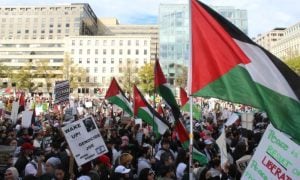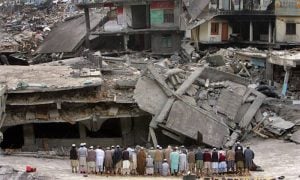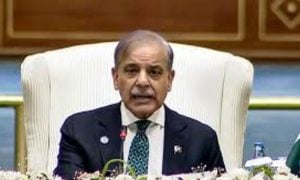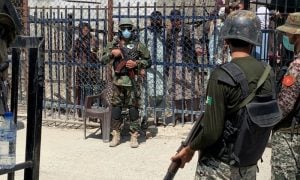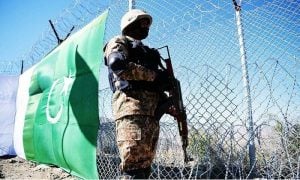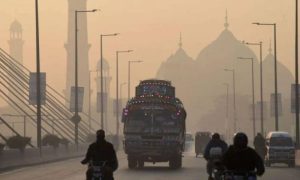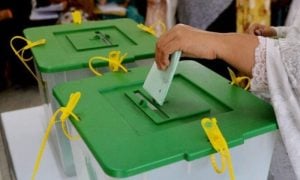The free world today bears witness to two of the most acute, protracted, and besieged humanitarian catastrophes: one in Indian Illegally Occupied Jammu and Kashmir (IIOJK), and the other in the blockaded Gaza Strip.
Despite their geographical divide, these regions share a dark commonality. Both have been transformed into living laboratories of occupation, repression, and collective punishment. What unites these crises beyond mere circumstances is the ideological and tactical synergy between their perpetrators: India under Narendra Modi and Israel under Benjamin Netanyahu. Yet to truly understand the scale of this convergence, we must begin by examining Kashmir, a land suffocating under militarised occupation and ideological erasure.
Perpetually under siege
Jammu and Kashmir, under India’s de facto colonial grip, remains one of the most militarised regions on the planet. Following the unilateral abrogation of Article 370 in August 2019, which stripped the region of its limited autonomy, the situation has gravely deteriorated. An estimated 500,000 Indian troops now patrol the region, enforcing curfews, conducting raids, and detaining civilians through mass dragnets with little to no accountability. Draconian laws such as the Armed Forces Special Powers Act (AFSPA) and Public Safety Act (PSA) serve as tools of unbridled authority.
These laws allow Indian forces to arrest individuals without warrants and detain them indefinitely without trial.
According to the ‘Kashmir Law and Justice Project’, these legal frameworks are frequently used to justify mass surveillance, demolitions, arbitrary arrests, and the muzzling of dissent.
The April 2025 edition of “Key Developments in the Human Rights Situation in IIOJK” reveals that numerous Kashmiri journalists, human rights defenders, political activists, and dissenters continue to be arbitrarily detained. Emblematic cases include those of human rights defender Khurram Parvez—illegally imprisoned for almost three-and-a-half years (1,273 days), journalist Irfan Mehraj—illegally imprisoned for over two years (789 days), and human rights lawyer Mian Abdul Qayoom—illegally imprisoned for almost 11 months (327 days).
Surveillance, Torture & Sexual Violence
Arbitrary detention, torture, and enforced disappearances are no longer anomalies; they have become systemic. In its report titled Human Rights: The Hidden Casualty in Kashmir Conflict, CIVICUS—a Johannesburg-based global alliance of civil society organisations and activists—notes that India’s state apparatus in IIOJK routinely resorts to these brutal measures. Children, teenagers, and even elderly citizens are frequently detained incommunicado, subjected to harsh interrogations, or forced to sign confessions under duress.
Equally alarming is the use of sexual violence as a tool of state terror. A report by Kashmir Media Service on the International Day for the Elimination of Sexual Violence in Conflict on 19 June 2025 revealed that since the onset of insurgency in 1989, over 11,267 women have reportedly been subjected to sexual violence by Indian forces.
The report highlighted shocking cases such as the 1991 Kunanposhpora mass rape, the 2009 Shopian double rape and murder, and the 2018 gang rape of minor Aasifa Bano in Kathua. The report also condemned the prolonged detention of over three dozen women, including resistance leader Syeda Aasiya Andrabi and her associates Fahmeeda Sofi and Nahida Nasreen.
Cases as recent as 2025 indicate that these crimes are not relics of the past but an ongoing horror. The physical trauma is compounded by social ostracism and judicial neglect, leaving survivors without justice or healing. Religious freedoms are also actively suppressed. Indian authorities routinely impose bans on congregational Friday and Eid prayers, raid mosques, and target religious leaders. These actions not only stifle faith-based identity but also aim to dismantle the cultural fabric of the Muslim-majority region.
Fernand de Varennes, Special Rapporteur on minority issues for Office of the United Nations Office High Commissioner for Human Rights (OHCHR) said, “The loss of autonomy and the imposition of direct rule by the Government in New Delhi suggests the people of Jammu and Kashmir no longer have their own government and have lost power to legislate or amend laws in the region to ensure the protection of their rights as minorities.”
Settler-colonialism in motion
Beneath the surface of repression lies a calculated demographic engineering project. The new domicile laws introduced post-August 2019 allow non-Kashmiris to settle in the region—thereby altering its ethnic and religious composition.
In a book Colonizing Kashmir: State-Building Under Indian Occupation, Hafsa Kanjwal states that “India’s escalating assaults on Kashmiri sovereignty include laws that enable Indian citizen-settlers to buy land and achieve “domicile” status in Kashmir (which in turn gives them voting and employment rights) and the Indian army to make land grabs, as well as providing opportunities for investment Indian corporations and resource extraction. While some scholars have argued that settler-colonialism and colonialism are antithetical, I situate settler-colonialism as a variant of colonialism and thus constitutive of colonial occupations”.
This is very similar to Israel’s settler-colonial policy in the West Bank and also the blatant violation of Article 49 of the Fourth Geneva Convention which explicitly prohibits the forcible transfer or deportation of protected persons from an occupied territory. Indian actions directly contravene international law and UN Security Council resolutions. The Global Peace Index 2025 categorises Jammu and Kashmir as one of the world’s highest-risk regions for conflict escalation, particularly alarming given the nuclear capabilities of both India and Pakistan.
Repetitive condemnation, minimal action
The international community’s response has been rhetorically consistent but practically feeble. The United Nations High Commissioner for Human Rights (OHCHR) published two landmark reports in 2018 and 2019, documenting India’s systemic violations, excessive force, extrajudicial killings, arbitrary arrests and suppression of freedoms. Yet, India dismissed both reports, labelling them biased and politically motivated. The 2018 OHCHR report states: “The United Nations Special Rapporteur has sent three communications to India expressing concerns about ‘intentional, excessive or indiscriminate use of firearms’ by Indian security forces and the failure to conduct ‘thorough, prompt and impartial investigations’ into these cases in order to uphold rule of law and to ensure non-reoccurrence of the violations.”
Human Rights Watch, in its July 2024 report, underscores the continuity of repression: “The Indian security forces continue to carry out repressive policies including arbitrary detention, extrajudicial killings and other serious abuses.”
International forums have echoed these concerns. British parliamentary debates from March 2025 harshly criticised India’s record, with MPs urging unrestricted access to Kashmir for international observers and investigators. However, these condemnations have failed to translate into tangible diplomatic or economic consequences.
Demonization of dissent
At the heart of this repression lies the ideological engine of Hindutva—an ultra-nationalist vision that sees India as a Hindu Rashtra (Hindu nation). Under Narendra Modi’s leadership and the Bharatiya Janata Party (BJP), this ideology has permeated state institutions and security doctrines. According to the article of Centre Tricontinental (CETRI), Think tank based in Belgium, “The RSS-schooled BJP leaders are adept at putting out this narrative, which erases the people of the Kashmir, and they add a further spin. The BJP has successfully presented itself as a messiah protecting India’s honour in Kashmir, while branding everybody else, including its domestic political opponents, as the enemy.”
As per the article of Anuradha Bhasin titled Modi has forcibly integrated Kashmir with India but erased Kashmiris, “The RSS’s ideology promotes open hatred for minorities, cleaving to an idea of nationalism that is not based on constitutional values but is defined by the ostensible purity of the Hindu race. Kashmir—the only Muslim-majority territory in India—forms an important pivot in its project: it is here that all the crucial antagonists of Hindutva—a Muslim-dominated demography, cultural dissimilarity from Hindu norms, and the interests of Pakistan—exist in one place. It is also here that a frenzied hatred can be whipped up against Muslims, seen as embodiments of terrorism and the enemy that is Pakistan, and from this the same hatred can be propagated across the rest of India.”
Moreover, according to Al Jazeera, India’s National Security Advisor Ajit Doval described civil society groups in India as “new frontiers of war”. It is a stand also shared by Modi’s BJP as his government goes after human rights defenders in not only the disputed region but also across India. This sentiment echoes in state policy, which increasingly criminalises human rights activism across the country, not just in Kashmir. This ideological assault aims to reduce Kashmiri identity to a security threat. By branding dissent as sedition and resistance as terrorism, the Indian state has created an environment where even peaceful expression is met with incarceration.
Doctrine of ideological supremacy
Kashmir today stands as a case study in how democracies can devolve into oppressive regimes under the guise of national unity and security. The silence of the international community only emboldens India’s actions, giving it de facto impunity. The parallels between India’s tactics in IIOJK and Israel’s policies in Palestine are becoming increasingly difficult to ignore.
As per The Times of Israel’s article Modi’s familiar-sounding ‘settler’ masterplan for Indian Kashmir, it is a shared doctrine of settler colonialism and ideological supremacy. In both cases, demographic alteration is used as a tool to erode the political identity of a Muslim-majority population. Kashmir’s occupation is not just a territorial conflict, it is a fight for cultural, religious and historical survival against an aggressive nationalist state bent on erasure. IIOJK and Gaza lie thousands of miles apart, yet both bleed under the same blueprint of brutality, where ethno-nationalism justifies genocide.
In Gaza, there is even more heinous siege-where starvation, airstrikes, rapes and collective punishment have been institutionalised under tyrant Israeli rule.
To be Continued…..













